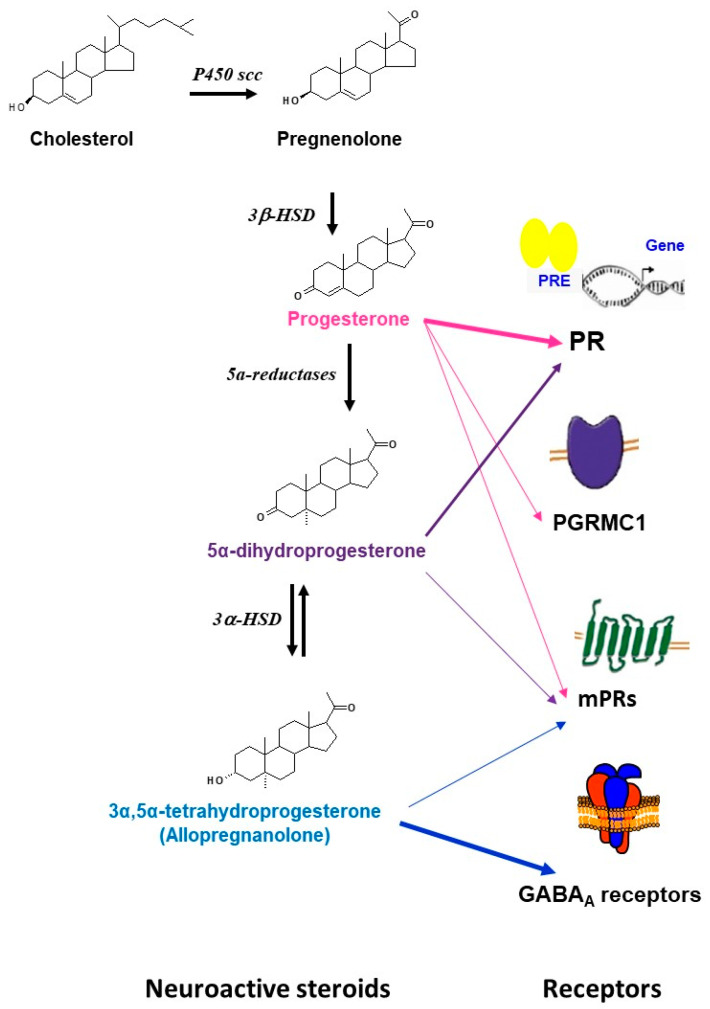Figure 1.
Schematic representation of the synthesis, metabolism, and main receptors that are involved in the actions of progesterone and its metabolites in brain. The precursor cholesterol is first converted into pregnenolone by the side chain cleavage cytochrome (P450scc) enzyme, pregnenolone is then converted to progesterone by the 3β-hydroxysteroid dehydrogenases (3β-HSD). Progesterone can further be bio-converted to 5α-dihydroprogesterone by 5α-reductases. 5α-dihydroprogesterone is converted to 3α,5α-tetrahydroprogesterone (allopregnanolone) by the 3α-hydroxysteroid oxidoreductase (3α- HSD) enzyme. Progesterone can bind to multiple receptors including the classical intracellular receptors (PR), the membrane receptors (mPRs: mPR α, mPβ, mPγ, mPRδ, mPRε), and the membrane-binding sites (PGRMC1). Some effects of progesterone may be mediated by its neuroactive metabolites. 5α-dihydroprogesterone binds to the classical receptors PR and has relatively high binding affinity for mPRα. 3α,5α-tetrahydroprogesterone (allopregnanolone) has no affinity for the intracellular PR, but is a potent allosteric modulator of GABAA receptors. Some neuroprotective effects of allopregnanolone may be mediated by the membrane progesterone receptor mPRδ.

